
In the previous column, I reviewed unstable upper body step-ups. This column expands on the column featuring unstable upper body step-ups using the BOSU Balance Trainer.
Similar to lower body exercise progressions, I also utilize a linear to lateral progression with upper body training. Once clients master a linear step-up, I advance to lateral step-overs.
Execution:
Begin in a tall plank position with the hands on the left side of the BOSU Balance Trainer. The feet should be positioned so that the body will be straight when both hands are on the top of the BOSU Balance Trainer.
Similar to lower body exercise progressions, I also utilize a linear to lateral progression with upper body training. Once clients master a linear step-up, I advance to lateral step-overs.
Execution:
Begin in a tall plank position with the hands on the left side of the BOSU Balance Trainer. The feet should be positioned so that the body will be straight when both hands are on the top of the BOSU Balance Trainer.
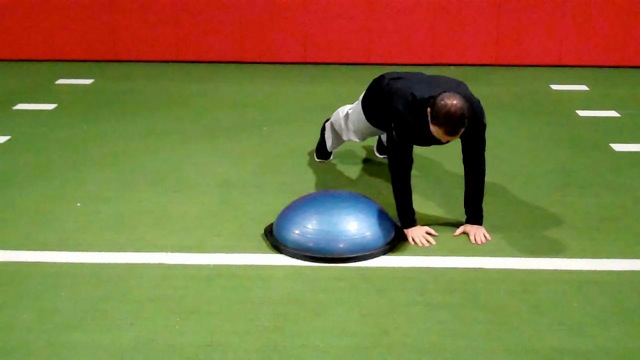 | 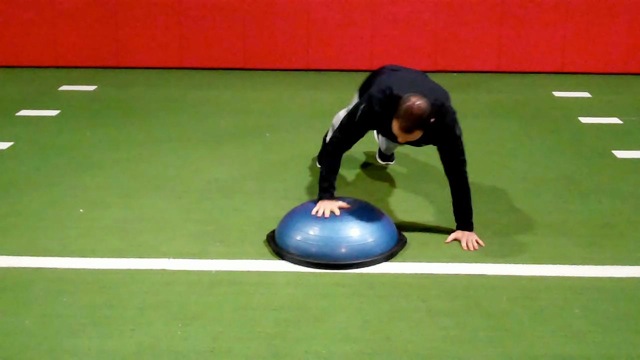 | 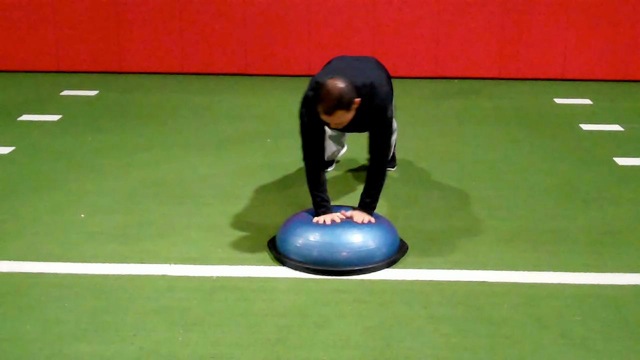 |
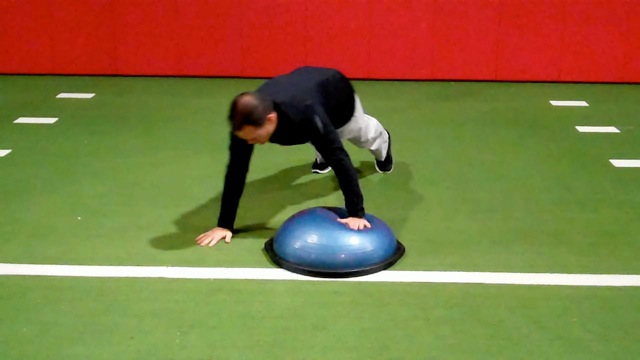 | 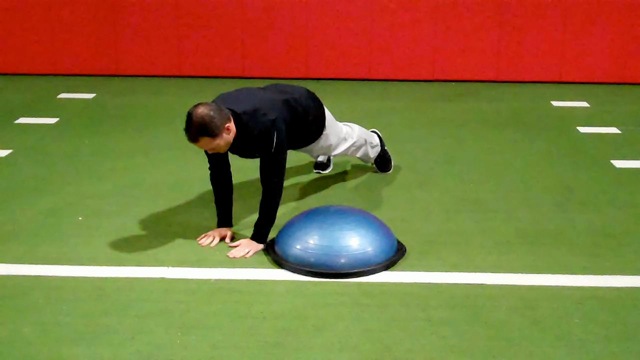 |
Repeat this activity only switching the start position relative to the BOSU Balance Trainer for set number two allowing for the left hand/upper extremity to lead the activity. Again, the cadence should be slow and deliberate to minimize excessive torso rotation and allow for sufficient stimulus and loading through the support arm.
Regression:
Begin on one side of the BOSU Balance Trainer and step up onto it, pause and then move back to the floor to the start position (no step-up and over). Repeat for 5-10 times and then switch sides.
Progression:
As discussed previously, it may make sense to perform the exercise with more rapidity if a conditioning response is sought or if the client needs to perform ballistic movement for sport. In addition, this rapid movement pattern is a precursor for an advanced unstable plyometric push-up variation where the client propels him/herself back and forth.
Application:
This exercise is effective in providing asymmetrical loading through the upper extremity to enhance and challenge shoulder/scapular stability in the frontal plane. Sufficient core activation is also required to maintain proper trunk alignment throughout. The exercise is effective for overhead athletes, gymnasts, wrestlers, rock climbers and anyone in need of better shoulder, scapular and core stability.
Precautions/additional notes:
Be aware that this exercise may not be suitable for clients with limited wrist extension, wrist pain or tendonitis in the upper extremity. I suggest beginning on the knees if there is any question regarding the client's upper body strength or capacity to safely perform the exercise.
Begin on one side of the BOSU Balance Trainer and step up onto it, pause and then move back to the floor to the start position (no step-up and over). Repeat for 5-10 times and then switch sides.
Progression:
As discussed previously, it may make sense to perform the exercise with more rapidity if a conditioning response is sought or if the client needs to perform ballistic movement for sport. In addition, this rapid movement pattern is a precursor for an advanced unstable plyometric push-up variation where the client propels him/herself back and forth.
Application:
This exercise is effective in providing asymmetrical loading through the upper extremity to enhance and challenge shoulder/scapular stability in the frontal plane. Sufficient core activation is also required to maintain proper trunk alignment throughout. The exercise is effective for overhead athletes, gymnasts, wrestlers, rock climbers and anyone in need of better shoulder, scapular and core stability.
Precautions/additional notes:
Be aware that this exercise may not be suitable for clients with limited wrist extension, wrist pain or tendonitis in the upper extremity. I suggest beginning on the knees if there is any question regarding the client's upper body strength or capacity to safely perform the exercise.
 | Add BOSU to the equation and intensify your training programs. You've trusted BOSU for years, and now we're giving you more reasons to make BOSU an essential part of your fitness and training routines. |
Brian Schiff, PT, OCS, CSCS, is a licensed physical therapist, respected author and fitness professional. Currently, he serves as the supervisor at the Athletic Performance Center in Raleigh, NC. Brian presents nationally at several professional conferences and seminars on injury prevention, rehab and sport-specific training. For more cutting edge training information, subscribe to his monthly Training & Sports Medicine Update at www.BrianSchiff.com.
















